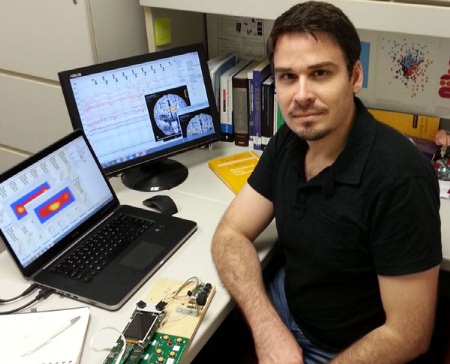Young Scientists Profile: Conversation with Hasan Ayaz

- Can you please talk about your background?
My first computer was a Sinclair ZX Spectrum that I received at my 8th birthday. My parents soon regretted that, as I was captivated by this magical (!) device that had 128 Kilobytes of memory, required cassette player to save data and the only TV in the house to operate. There was something special with it that inspired me to learn the Basic programming language from its manual books, even though I didn’t know the language of the book, English. One of the programs I later developed was “soru bankasi”, essentially a computerized version of SAT-like multiple-choice exam that was nationally given at the end of primary school. It was stored in a cassette and took 2-3 minutes to load each time with model-like noise, but who cares; it was able to prepare a final report immediately at the end of a test :)
Well, I owe it to my parents’ vision that I was able to read and write major programming languages before the first year of my undergraduate studies at Boğaziçi University. And, at the Electrical and Electronic Engineering department, I had the chance to get involved in various academic and industrial research projects on intelligent systems, robotics, signal and image processing.
The next step for me was health applications and the opportunity to develop life-saving technologies. I came to the United States for my graduate studies in Biomedical Engineering and completed PhD in 2010 where I developed enabling software for functional Near Infrared Spectroscopy based brain monitoring instruments that were eventually licensed and became commercially available. For example, InfraScanner received FDA approval in December 2011 and is currently being distributed for emergency care to save lives in rural areas in Europe, Africa and Asia. Another commercialized system that we worked on in our lab is fNIR Device, a non-invasive portable research system for studying human brain function. Biomedical engineering is at the intersection of engineering, the life sciences and healthcare. With the global health challenges, there’s ever increasing need for new portable and point of care technologies, and thus biomedical engineers.
- You’ve always been on the top ranks of academic achievement. What was the driving force behind your success at such young ages?
I was lucky enough to work with wonderful mentors and role models such as Banu Onaral, Isil Bozma, Yorgo Istefanopulos among many other inspiring academicians. Especially, witnessing the 25 hours per day work schedule and efficiency of Dr. Onaral, sets the bar very high.
- What would you like to say to the Young Turkish Scientists?
The 2006 TASSA annual conference was an eye opener for me where I was able meet and learn from many Turkish American scientists, realized the extent of the community and remarkable works of so many established Turkish academicians in the USA.
It was also amazing and inspiring to see the sheer number and to hear about the widespread success of young Turkish Scientists, Scholars and Engineers, they make us all proud. They represent Turkiye here in the United States well and are already expert in their field of study. Over time, I hear from many that volunteering is usually skipped or ignored. I would like to emphasize its importance and suggest students to make time for volunteering in any non-profit organization or cause of their choice to contribute to the community.
- What would you like to achieve in the near future?
I would like to work on development and application of next generation neuroimaging technologies for studying human brain functions in natural settings.
- Would you please summarize your research in one paragraph?
My research interest focuses around development of optical brain imaging and its clinical and field applications, specifically i) Neuroergonomics, human computer interaction applications including objective assessment of cognitive workload, training and expertise development of human operators such as air traffic controllers and unmanned aerial vehicle ground operators, ii) development of noninvasive brain computer interfaces for communication and augmented interactivity in simulation and gaming settings.
More about Hasan Ayaz: www.hasanayaz.com
[Back to TASSA Newsletter The Bridge vol 1 issue 3 ]